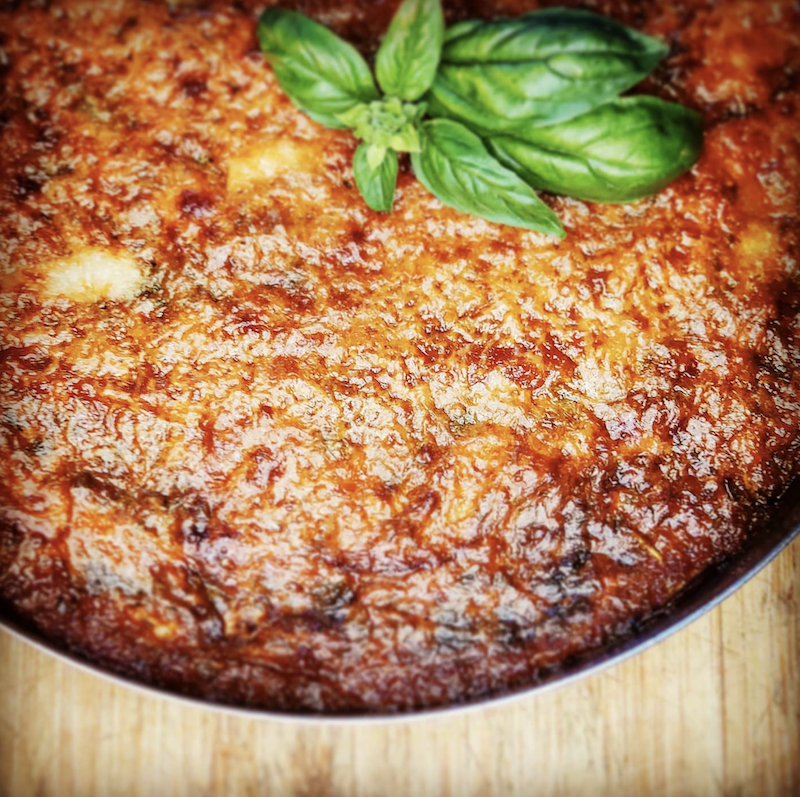The Recipe:
Parmigiana is a traditional dish, characteristic of Southern Italy. It is typically prepared in the summer as the main course. Many varieties exist, but the basic recipe calls for layering and baking three main ingredients: eggplant (aubergine), cheese, and tomato sauce. Here a short history of the Parmigiana Recipe.
The history of Parmigiana dish: Sicily, Naples, and Parma
The eggplant arrived in Italy in the 7th century via Arab merchants who first discovered it in India. Soon, the eggplant was adopted as part of Southern Italian culinary culture.
Parmigiana was one of the first recorded dishes using eggplant – a dish with a complex and global history. Many regions in Italy claim to be its birthplace, including Parma, Naples, and Sicily. We will explore those histories. More importantly, this dish can teach us about the fascinating and hyper-globalized history of the Mediterranean.
Parma
People often assume that “Parmigiana” originated in Parma. However, if it did come from Parma, it’s more likely it came from the phrase “cucinare alla maniera dei Parmigiani” or “cook like people from Parma.” Originally, this signified the process of cooking vegetable slices in layers. Of course, Parma is also known for its most famous cheese: parmigiano. And in fact, by the 17thcentury, the cheese had gained in such popularity that cookbooks began to refer to “cucinare alla maniera dei Parmigiani” as not just the layering of vegetables but also the use of cheese in the dish.
Today, if you are in the Parma area, you’ll see Parmigiana referred to as “melanzane alla parmigiana” – cooking eggplant with the Parma technique.
Naples
If we travel south, we can find the first written recipes for the dish. Vincenzo Corrado was a chef from Puglia that worked for important aristocratic families in the 18th century. His cookbook, Cuogo Galante (1733), included a recipe that entailed frying zucchini in lard (strutto), layering it with parmigiano cheese, and baking it in the oven. Though it didn’t call for eggplant, it is the first recorded recipe for a dish that entailed a similar technique.
In 1839, another chef named Ippolito Cavalcanti from the region wrote a cookbook called Cusina Casarinola in the Neopolitan language. One recipe stated:
“Farai friggere le melanzane e poi le disporrai in una teglia a strato a strato con il formaggio, basilico e brodo di stufato o con salsa di pomodoro e coperte le farai stufare”, translating to: “You will fry the eggplants and then place them in a pan in a layer with the cheese, basil and either broth or tomato sauce. You will then cover and stew them [on the stove].”
These written recipes help prove that Parmigiana was commonly prepared in Neopolitan culture starting in the early 18th century.
Sicily
You may have noticed a gap in the timeline. There are in fact ~1000 years of history between when the eggplant arrived in Southern Europe and when it showed up as the dish, Parmigiana, in the rest of Italy.
There is no recorded evidence of Parmigiana during those years. However, we do know that the eggplant likely arrived in Southern Europe with the Arabic name, badingian. Before that, it had been cultivated in India under the old name brinjal (baingan in Hindi today). Note the similarity to Parmigiana!
From an agricultural standpoint, we also know that it was cultivated in Sicily soon after it arrived in Southern Europe. The climate and environment was well suited to its cultivation and encouraged its spread across Southern Italy.
To this day, Sicilians call the dish, “Parmigiana di melanzane” – the flipped version of the name given in Parma, notably. Given the etymological history of the eggplant, its location of cultivation, and the gap in history, it’s likely that Parmigiana – the name and the recipe – originated in Sicilian roots. It is not a dish made like someone from Parma, with parmigiano. It is first and foremost, Parmigiana, or eggplant, arriving from distant lands.
Parmigiana’s history highlights the essence of Mediterranean culture and history. The region was (and to some extent, still is) a mix of ideas, products, and ways of life. A bazaar of sorts, on a large scale. And Parmigiana – its origin, name, and journey – is one example of that bazaar. When you prepare Parmigiana at home, you can celebrate the journey this dish made throughout all of Italy via a beautiful, global exchange process to get to your plate.

